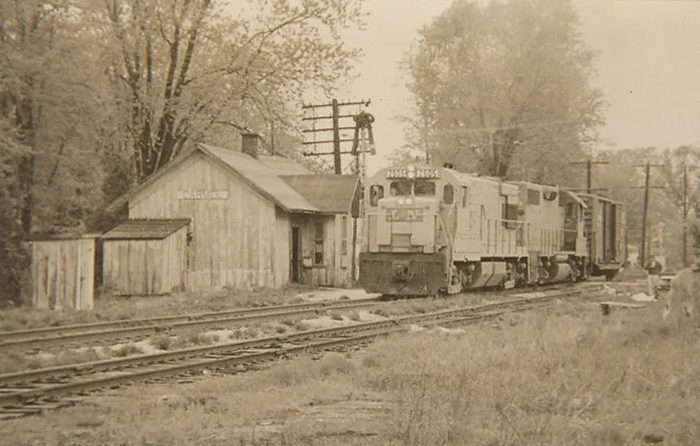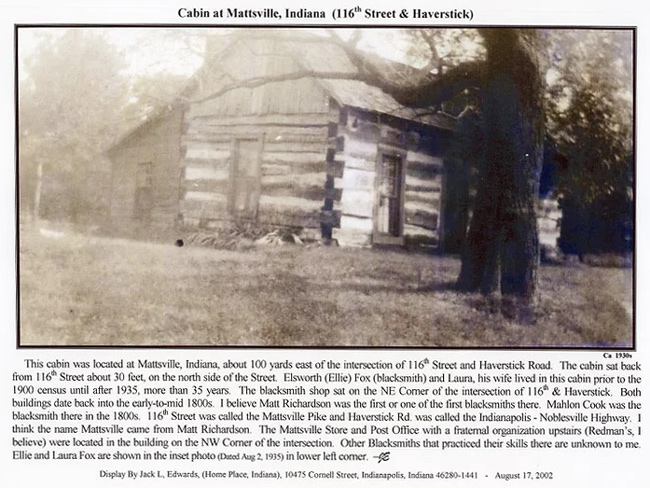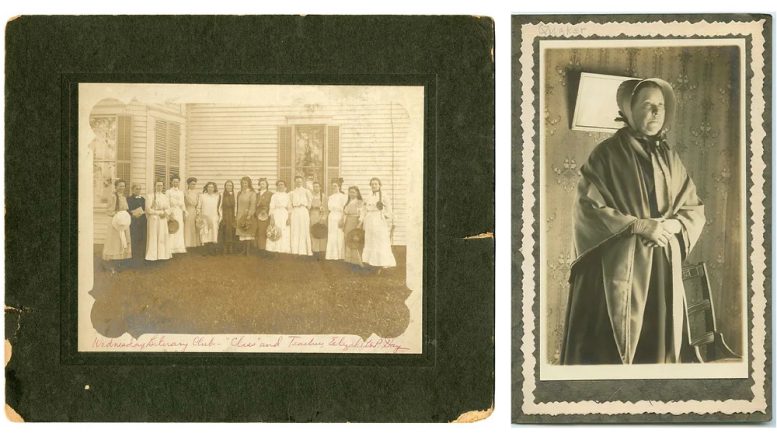Submitted by Hamilton County Bicentennial Commission
As executive director of the Carmel Clay Historical Society, Debbie Gangstad wanted to dream big about how her organization would contribute to the Hamilton County Bicentennial. But when you don’t have a physical space to host people, it doesn’t make dreaming big very easy. Nonetheless, “Clay Township History Fair: A Journey Back in Time” took shape.
In 2023, nonprofit organizations across Hamilton County will host official Bicentennial programs, which as of this writing (Sept. 16) were still being finalized. In Carmel, the planned “Clay Township History Fair: A Journey Back in Time” will be a collaboration between the Carmel Clay Historical Society and Carmel Clay Public Library.
Gangstad wanted a program that ran over the course of at least a month, a program whose assets could be repurposed in the future and one that could adequately tell the story of one of Hamilton County’s most changed communities.
Her big challenge was capacity. The Monon Depot, situated adjacent to what had been a busy railroad line by the same name and what is now the pedestrian-packed Monon Trail, served as a history museum and home of the historical society for many years. But when we spoke with Gangstad in September 2022, the 1882 building was temporarily shuttered in preparation for its short move south to accommodate a planned museum that will be much larger than the depot’s 950 square feet. When it is returned, the depot will sit slightly to the north and be connected to the new museum.

The Monon Railroad carried both freight and passengers from 1883 to 1959. Heavy freight continued to be hauled until 1986. In this photo from 1885, the train is parked at the Carmel Depot. (Photo courtesy Carmel Clay Historical Society)
Luckily, Gangstad and her team knew people and had supporters like Clay Township trustee Doug Callahan and the City of Carmel. Plus, the main campus of the nearby Carmel Clay Public Library was about to reopen following major renovations, and representatives there reached out to Gangstad, who is also the Clay Township representative on the Bicentennial Commission. She refers to the library’s call as a godsend.
“We welcome community collaboration and want to create partnerships with other organizations. Partnering with Carmel Clay Historical Society was a great fit,” said Kendall Culbertson, the assistant manager of the library’s adult services department. In her role, Culberston facilitates programs and experiences at the library.
The library’s new, beautiful spaces could accommodate just about whatever Gangstad, historian Andy Wright and the rest of the team could imagine.
“The focus will be to attract families, to share history and stories that families want to hear – not a bunch of dates. We want to highlight the characters who were the backbone of Carmel,” Gangstad says. “They are why we’re here in this community today, the one that we love.”
The plan is for the family-friendly “Clay Township History Fair: A Journey Back in Time” to take place wholly at the Carmel Clay Public Library. During a Sunday afternoon in November, dignitaries and speakers will share stories with the public in the nearly 4,000 square-foot community room. Fortified by autumnal treats, families can tour the exhibits and hear poetry readings, and patriotic and Indiana-centric music performed by Carmel High School groups.
On that November Sunday and over the course of several weeks, the public will be able to visit exhibits throughout the library that tell stories many residents might not know about.
For example, did you know that Clay Township was once home to four small communities – not one named Carmel – most of which had a post office and general store? They were called East Branch/Gray, Mattsville, Sockum/Eldorado and Home Place. And there were other less-established communities associated with a church and usually a school. To encourage people who live in Clay Township today to connect to forgotten places like these, Gangstad wants to develop an exhibit that illustrates what was happening on the property of each of Carmel’s 11 active elementary schools during the late 1800s.

Photo courtesy Carmel Clay Historical Society
The Clay Township History Fair will utilize not only the library’s expanded square footage but also its technology offerings. Inside the new digital media lab, families and individuals will be invited to record one reason they love Clay Township. The recordings will become part of a collection piped through speakers during the event. Organizers will also put the lab’s virtual reality station to work in some interactive way.
Deciding which stories to tell in a township that has changed so much will be daunting.
“Andy has a list a mile long of what he wants to do,” Gangstad says of Andy Wright, the local historian. “When we have a situation like this when we have a little extra money that we didn’t have in our budget, it allows us to do more of these things.”
Organizations that applied to host a Bicentennial program were eligible to receive a micro-grant of up to $500 to help make them successful.
One inevitable exhibit will be the Quaker influence on Clay Township. In fact, when the new Carmel Clay Historical Society museum opens, that religion’s impact will be one of the first exhibits to take shape. Driving through Carmel’s older neighborhoods, you can see one of the more visible pieces of evidence that Quakers predominated: the lack of ornately designed Victorian homes. For Quakers, being showy in any way is frowned upon, so they adopted more utilitarian architectural styles.
The Quakers also promoted women’s rights and literacy. Those forces came together in 1905 when the first library opened, thanks to the Wednesday Literary Club. This women’s group in a town of only 500 people held bake sales, raised funds and secured a tax levy until their library came to fruition.
Elements of the Clay Township History Fair will be packed away for safekeeping until the new museum opens (possibly in December 2024), when they will be displayed once more.
* * *
Give your history-loving friends and family a copy of Celebrating Hamilton County, Indiana: 200 Years of Change. Once printed, the book will be available at various locations. But quantities will be limited. Please order ahead to guarantee you get your copy.
The Hamilton County Bicentennial is proudly supported by Duke Energy, Hamilton County Board of Commissioners, Hamilton County Tourism Inc., and Hamilton County Historical Society.

